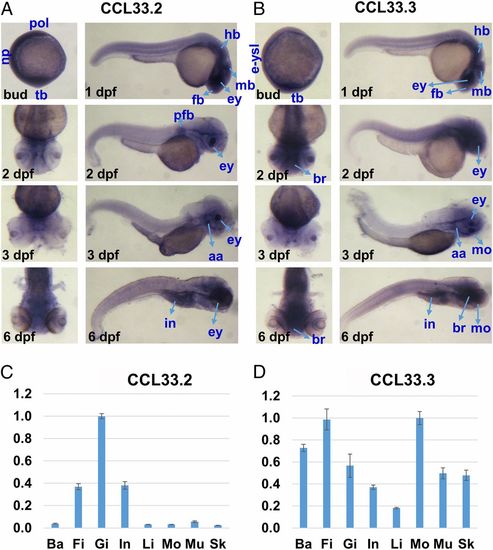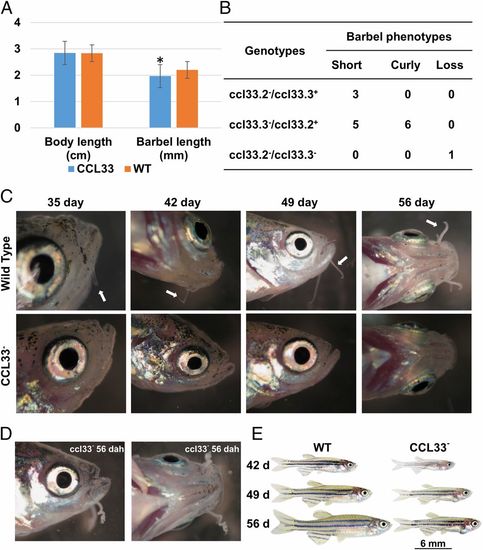- Title
-
Chemokine C-C motif ligand 33 is a key regulator of teleost fish barbel development
- Authors
- Zhou, T., Li, N., Jin, Y., Zeng, Q., Prabowo, W., Liu, Y., Tian, C., Bao, L., Liu, S., Yuan, Z., Fu, Q., Gao, S., Gao, D., Dunham, R., Shubin, N.H., Liu, Z.
- Source
- Full text @ Proc. Natl. Acad. Sci. USA
|
Expression of ccl33 genes in zebrafish. (A and B) In situ hybridization of ccl33.2 and ccl33.3 in zebrafish embryos of different developmental stages, including the bud, 1 dpf, 2 dpf, 3 dpf, and 6 dpf. aa, aortic arches; br, brain; ey, eye; e-ysl, external yolk syncytial layer; fb, forebrain; hb, hindbrain; mb, midbrain; mo, mouth; np, neural plate; pfb, pectoral fin bud; pol, polster; tb, tail bud. (C and D) Expression of ccl33.2 and ccl33.3 in adult zebrafish organs using real-time PCR analysis. The y axis represents the relative expression value. Ba, barbel; Fi, caudal fin; Gi, gill; In, intestine; Li, liver; Mo, mouth; Mu, muscle; Sk, skin. |
|
Knockout of ccl33.2 and ccl33.3 in zebrafish using the CRISPR/Cas9 system. (A) Body length of injected fish and wild-type (WT) fish was not statistically different; however, the barbel length of the injected fish was significantly smaller (P = 0.019) than that of the WT fish. (B) Number of individuals with different phenotypes in the ccl33− group and their associated genotypes. (C) Head region of WT and ccl33− zebrafish at different days after hatching. White arrows indicate the barbels of WT zebrafish. No barbels were observed in the ccl33− individual. (D) Individual with curly barbels in the ccl33− group. dah, days after hatching. (E) Gross morphology of zebrafish from the WT group and the individual with double knockout of ccl33.2 and ccl33.3. PHENOTYPE:
|


